
CLINICAL DYSMORPHOLOGY
Scope & Guideline
Unraveling the complexities of dysmorphic syndromes.
Introduction
Aims and Scopes
- Clinical Characterization of Dysmorphic Syndromes:
The journal emphasizes the detailed clinical characterization of various dysmorphic syndromes, including their phenotypes, associated anomalies, and long-term outcomes. - Genetic Studies and Variant Identification:
A significant focus is on identifying novel and recurrent genetic variants associated with dysmorphic syndromes, aiding in diagnosis and understanding of genotype-phenotype correlations. - Case Reports and Literature Reviews:
The journal frequently publishes case reports that document unique presentations and the associated literature, contributing to the collective knowledge of rare conditions. - Interdisciplinary Approaches to Diagnosis:
It includes studies that explore interdisciplinary approaches to diagnosing and managing dysmorphic conditions, integrating genetic, clinical, and radiological data. - Longitudinal Studies and Follow-ups:
Research articles often include long-term follow-ups of patients, providing insights into the natural history of dysmorphic syndromes and their progression over time.
Trending and Emerging
- Novel Genetic Variants and Their Implications:
Recent publications have increasingly focused on identifying novel genetic variants and their clinical implications, reflecting a shift towards more personalized medicine in dysmorphology. - Expansion of Phenotypic Spectrum:
There is a growing trend in expanding the known phenotypic spectrum of various syndromes, indicating a deeper understanding of the variability and complexity of genetic conditions. - Integration of Advanced Genomic Techniques:
The use of advanced genomic techniques such as whole-exome sequencing and chromosomal microarrays is becoming more prevalent, allowing for more precise diagnoses and insights into rare genetic disorders. - Interdisciplinary Case Studies:
Emerging themes include interdisciplinary case studies that combine genetics, clinical observations, and imaging techniques to provide comprehensive insights into complex cases. - Focus on Ethnic and Geographic Variability:
There is an increasing interest in studying the ethnic and geographic variability in the presentation of dysmorphic syndromes, which aids in understanding the global diversity of these conditions.
Declining or Waning
- General Genetic Counseling:
There has been a noticeable decrease in publications that focus solely on genetic counseling aspects of dysmorphic syndromes, likely due to the increasing integration of genetic information into clinical practice. - Broad Phenotypic Descriptions without Genetic Correlation:
Papers that provide general descriptions of dysmorphic features without correlating them to specific genetic findings have become less frequent, as there is a stronger emphasis on genetic underpinnings. - Focus on Common Syndromes:
Research on more common dysmorphic conditions, which previously had a significant presence, is declining as the journal shifts towards highlighting rare and novel syndromic presentations. - Historical Literature Reviews:
The trend of publishing extensive historical literature reviews on well-established syndromes has diminished, with a preference for novel findings and case studies. - Single-Country Studies:
There is a reduced emphasis on studies limited to single-country cohorts, as the journal increasingly values diverse, multi-national research to enhance generalizability.
Similar Journals

JOURNAL OF PEDIATRIC ENDOCRINOLOGY & METABOLISM
Advancing the Future of Pediatric HealthThe JOURNAL OF PEDIATRIC ENDOCRINOLOGY & METABOLISM, published by Walter de Gruyter GmbH, is a reputable peer-reviewed journal dedicated to advancing the field of pediatric endocrinology and metabolism. Since its inception in 1985, this journal has become a vital resource for professionals and researchers, providing insights into the latest advancements, clinical practices, and foundational research in the care of children with endocrine disorders. With a noted Q3 ranking in Endocrinology, Diabetes and Metabolism, and a robust focus on Pediatrics, Perinatology, and Child Health, it addresses important topics such as hormonal imbalances and metabolic syndromes in young populations. Despite its non-open access status, it continues to play an essential role in bridging the knowledge gap within our understanding of children's health and disease, contributing significantly to the progress in this specialized field.
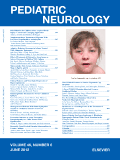
PEDIATRIC NEUROLOGY
Advancing the Frontiers of Pediatric NeurologyPediatric Neurology, a prestigious journal published by Elsevier Science Inc, is a leading resource in the field of child neurology and developmental neurosciences. With an impressive impact factor and categorization in the Q1 and Q2 quartiles across several relevant fields, including Pediatrics, Neurology, and Developmental Neuroscience, this journal is essential for researchers and healthcare professionals focused on pediatric neurological disorders. Since its inception in 1985, it has provided a platform for high-quality research, clinical studies, and reviews that drive advancements in diagnosis, treatment, and understanding of neurological conditions in children. Although the journal does not currently offer open access, it maintains a robust reputation in the academic community, bolstered by its prominent ranking in Scopus metrics. By engaging with the latest findings published in Pediatric Neurology, readers will gain vital insights that contribute to improving pediatric healthcare outcomes in neurology and neuroscience.
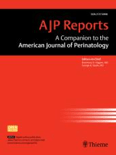
AJP Reports
Fostering collaboration for a healthier future in Obstetrics and Gynecology.AJP Reports, published by THIEME MEDICAL PUBL INC, is a distinguished open-access journal that has been making valuable contributions to the fields of Obstetrics and Gynecology and Pediatrics, Perinatology, and Child Health since its inception in 2011. With its ISSN 2157-6998 and E-ISSN 2157-7005, the journal serves as a crucial platform for the dissemination of groundbreaking research and clinical practice advancements. According to the 2023 categorization, it is ranked in the third quartile for Obstetrics and Gynecology and the second quartile for Pediatrics, Perinatology, and Child Health, reflecting its importance in these fields. The journal is committed to accessibility, ensuring that all published studies can reach a broad audience of researchers, practitioners, and students, ultimately fostering collaboration and innovation. As it converges its database from 2014 to 2024, AJP Reports continues to play a pivotal role in enhancing the understanding and management of maternal and child health issues, making it an essential resource for those at the forefront of these vital medical specialties.

Case Reports in Pediatrics
Empowering Healthcare Professionals with Real-World Pediatric Cases.Case Reports in Pediatrics is a distinguished journal dedicated to the publication of high-quality case reports that illuminate specific pediatric clinical challenges and advancements. Published by HINDAWI LTD, this journal has established itself as an essential resource in the field of pediatric medicine, offering an open-access platform since 2011 to ensure that researchers, healthcare professionals, and students have unrestricted access to valuable insights. With an ISSN of 2090-6803 and an E-ISSN of 2090-6811, the journal aims to foster knowledge exchange and further the understanding of pediatric healthcare practices. This publication not only encourages the sharing of unique and rare case studies but also promotes best practices and innovative methodologies. In a rapidly evolving field, Case Reports in Pediatrics serves as a vital tool for professionals seeking to enhance patient care and inform clinical decision-making.
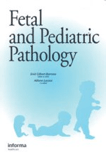
Fetal and Pediatric Pathology
Empowering clinicians with cutting-edge research insights.Fetal and Pediatric Pathology, an esteemed journal published by TAYLOR & FRANCIS INC, is dedicated to advancing the field of pediatric and fetal medicine through the dissemination of high-quality research and clinical insights. With an ISSN of 1551-3815 and an E-ISSN of 1551-3823, the journal has been a key resource for researchers and practitioners since its inception in 1983. Based in the United Kingdom, it covers a broad spectrum of topics relevant to Medicine, Pathology and Forensic Medicine, and Pediatrics, Perinatology, and Child Health, consistently reflecting on contemporary challenges faced in these fields. The journal has attained a commendable Q3 ranking within its categories as of 2023, underlining its relevance in the academic community. Though not an open-access publication, the research presented in Fetal and Pediatric Pathology plays a pivotal role in informing practice, guiding future studies, and enhancing the understanding of diseases affecting fetuses and children. Its convergence of research throughout multiple years, continuing until 2024, marks it as a crucial platform for ongoing scientific dialogue and innovation, aimed at fostering better health outcomes for younger populations.
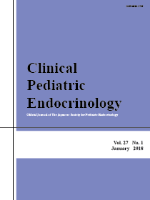
Clinical Pediatric Endocrinology
Transforming knowledge into practice for better outcomes in young patients.Clinical Pediatric Endocrinology is a prestigious journal dedicated to advancing the field of pediatric endocrinology, published by the Japanese Society of Pediatric Endocrinology. With a respectable ISSN 0918-5739 and E-ISSN 1347-7358, this journal serves as a critical platform for innovative research spanning various aspects of endocrine disorders in children, including diabetes and metabolic conditions. Although it does not currently offer open access, it remains highly relevant in its category, being ranked in Q4 and Q3 tiers across multiple specialties as of 2023. With a publication history that spans from 1992 to 2024, this journal has contributed significantly to the literature, as evidenced by its inclusion in prominent databases. It invites submissions from researchers and practitioners worldwide, aiming to facilitate knowledge sharing and improve clinical practices in pediatric endocrinology. For those dedicated to enhancing care outcomes in children with endocrine disorders, Clinical Pediatric Endocrinology provides essential insights and fosters a community of engaged professionals.

Journal of Fetal Medicine
Enhancing maternal and fetal health through shared discoveries.Welcome to the Journal of Fetal Medicine, a leading publication dedicated to the progress of research in the field of fetal health and medicine. Published by Thieme Medical and Scientific Publishers Pvt Ltd, this journal serves as a vital resource for professionals, researchers, and students alike, offering insights into the latest advancements, methodologies, and best practices in fetal medicine. With ISSN 2348-1153 and E-ISSN 2348-8859, the journal aims to provide an international platform for sharing valuable findings and clinical practices to improve outcomes for both mothers and their unborn children. While the journal is not open access, it ensures the dissemination of high-quality peer-reviewed content, promoting knowledge exchange across various subspecialties within fetal medicine. The Journal of Fetal Medicine is poised to impact the field significantly, fostering innovation and collaboration among its readership.
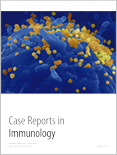
Case Reports in Immunology
Advancing Immunology One Case Report at a TimeCase Reports in Immunology, published by HINDAWI LTD, is an esteemed open-access journal that has been contributing to the field of immunology since its launch in 2011. With both ISSN 2090-6609 and E-ISSN 2090-6617, the journal provides a platform for researchers to publish detailed case reports that explore diverse immunological conditions and novel treatment approaches. This journal is crucial for clinicians, researchers, and students alike, seeking to broaden their understanding of immunology's practical applications and advances. As of 2023, it holds a Q3 ranking in Immunology and Q2 in Immunology and Allergy, reflecting its growing relevance and contribution to the field. Additionally, it is indexed in Scopus, where it ranks #178 in Immunology and Allergy and #192 in Immunology and Microbiology, enhancing its visibility and impact. With a comprehensive accessibility model, the journal is dedicated to disseminating knowledge widely and enriching discussions in immunological research.
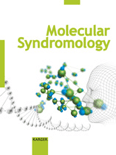
Molecular Syndromology
Connecting Molecular Genetics to Clinical PracticeMolecular Syndromology is a premier journal focused on the intricate connections between molecular genetics and syndromology, fostering discussions that advance our understanding of genetic disorders and their clinical implications. Published by KARGER, a distinguished name in medical and scientific publishing, this journal serves as a valuable platform for researchers, clinicians, and students in the field of genetics. With its ISSN 1661-8769 and E-ISSN 1661-8777, the journal has gained recognition in its category, currently positioned in the Q4 quartile for both genetic and clinical genetics disciplines according to the latest metrics. Despite being indexed lower in Scopus rankings, it addresses crucial gaps in research and offers open access options that enhance visibility and dissemination of knowledge. As it continues to converge from 2010 to 2024, Molecular Syndromology aims to bridge the gap between molecular research and its clinical applications, making a significant impact in the evolving landscape of genetic medicine.

Modern Rheumatology Case Reports
Fostering collaboration and discovery in the realm of rheumatology.Modern Rheumatology Case Reports, published by Oxford University Press, is an essential platform dedicated to the dissemination of unique clinical cases within the field of rheumatology. Launched in 2017, this journal provides a valuable resource for researchers, clinicians, and students interested in the nuances of rheumatological conditions and their management. With an E-ISSN of 2472-5625, the journal is accessible to a global audience, fostering knowledge exchange and collaborative research. Although currently ranked in the Q4 quartile and positioned 53rd out of 73 in the Scopus Medicine Rheumatology category, the journal is committed to enhancing its impact in the discipline by focusing on innovative case reports that inform clinical practice and contribute to the evolving understanding of rheumatic diseases. This endeavor not only supports the academic community but also aims to inspire new avenues for research and diagnostics. As such, Modern Rheumatology Case Reports is poised to become a significant reference point for those dedicated to advancing rheumatological care.